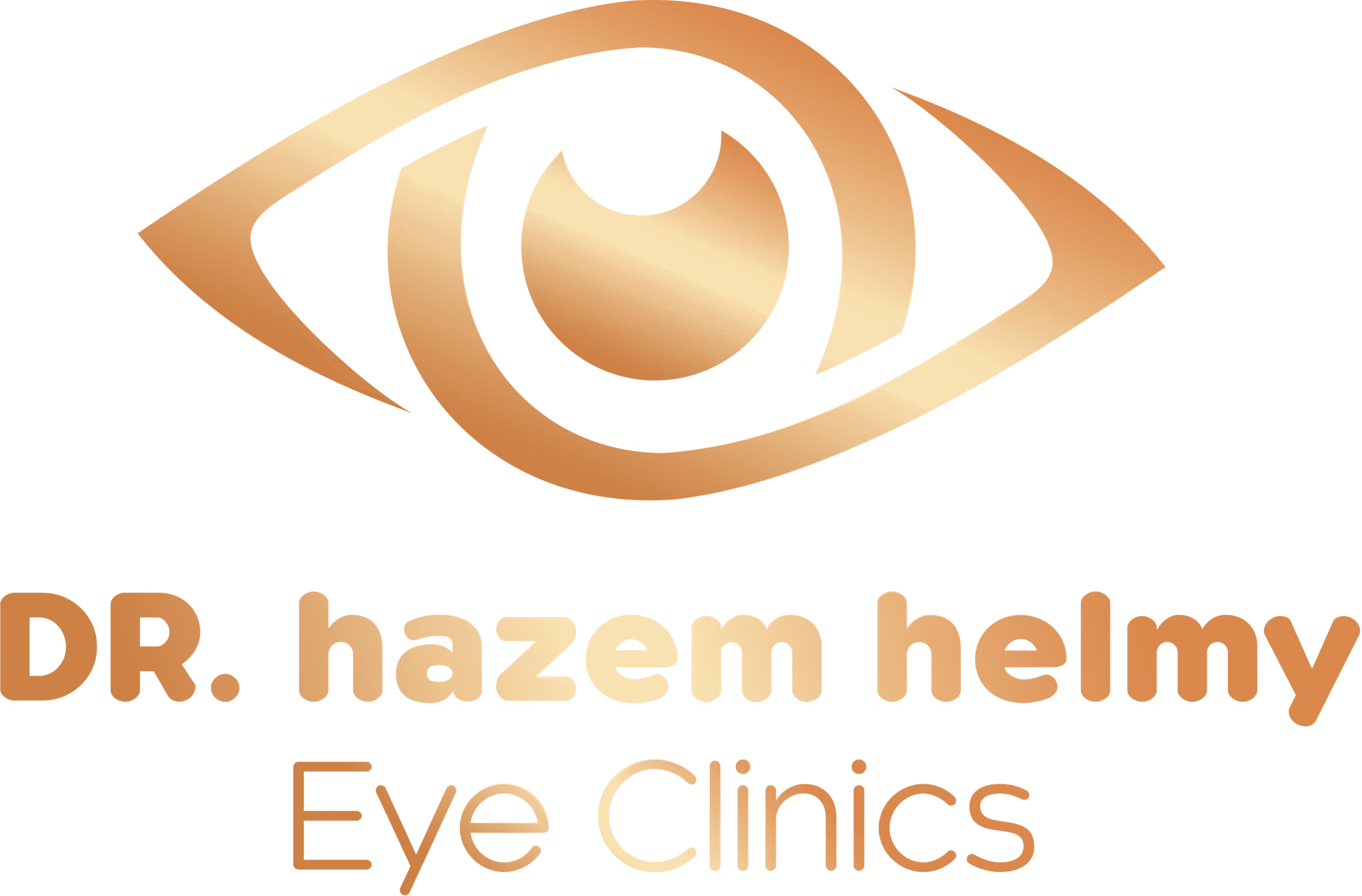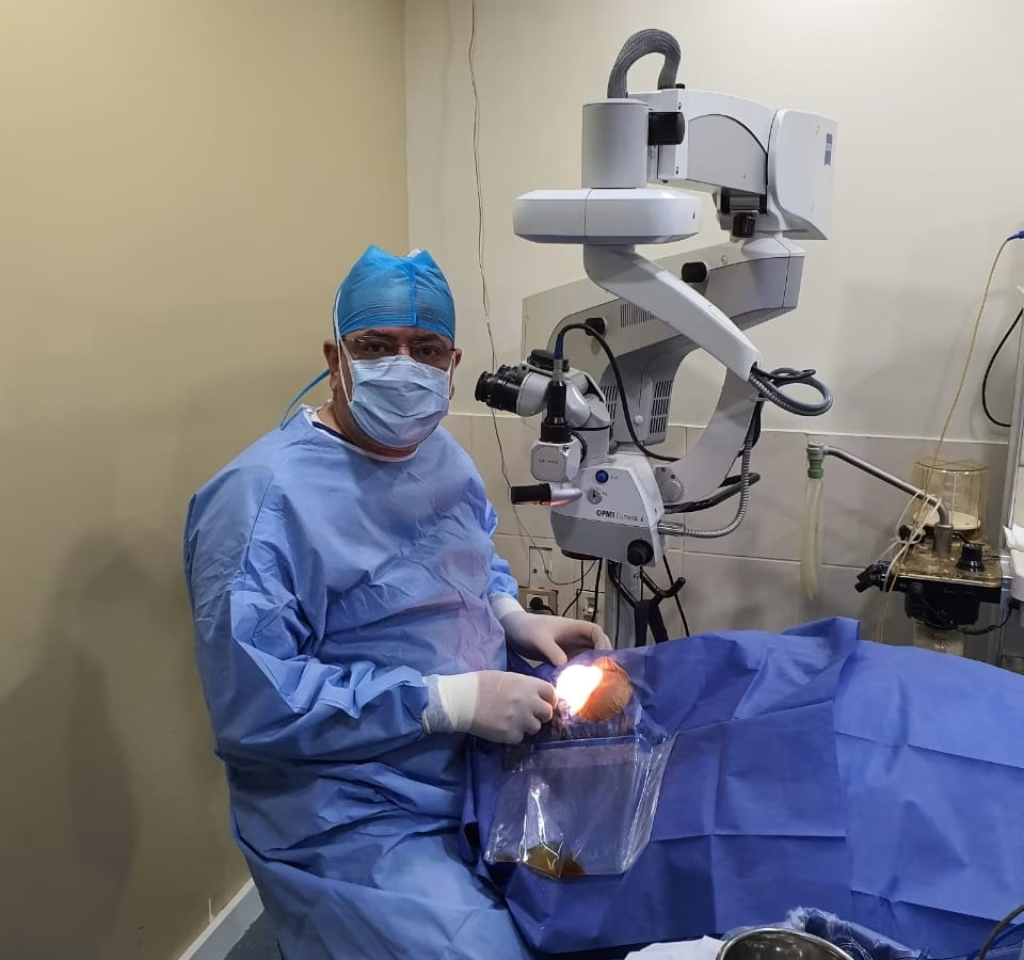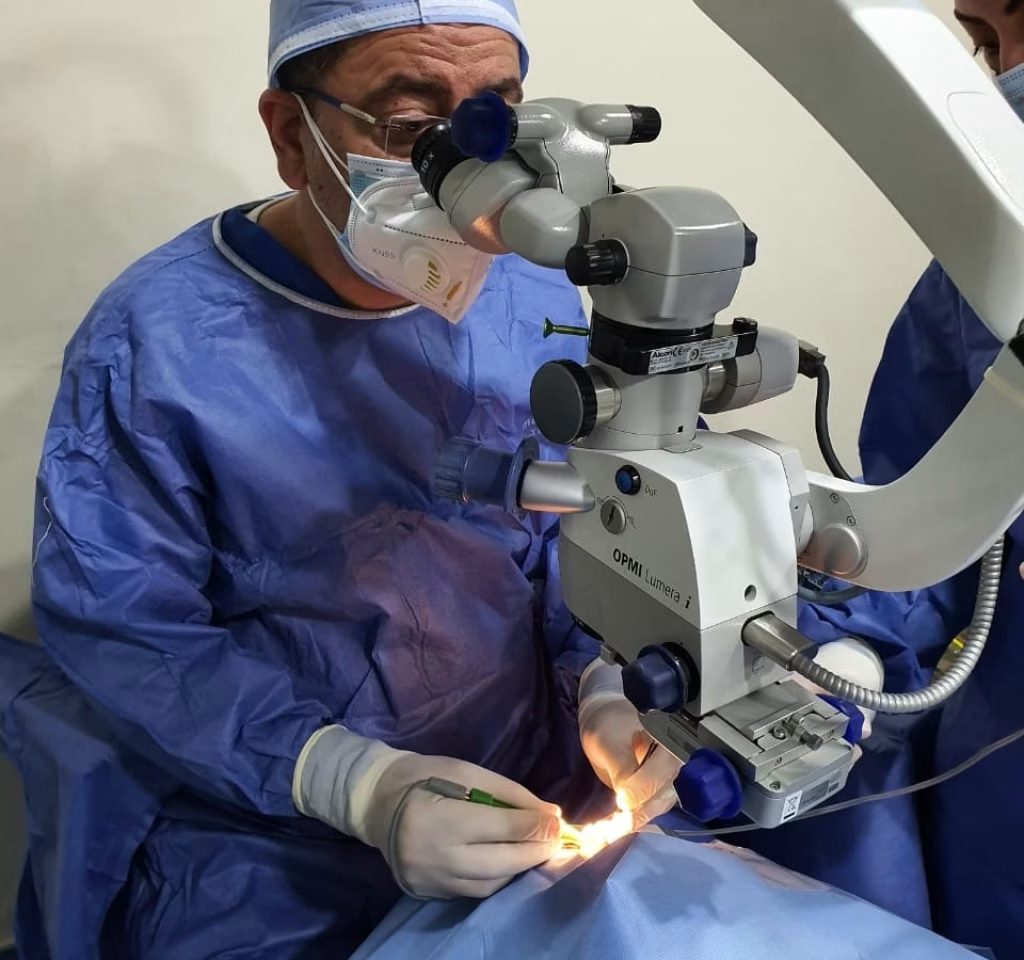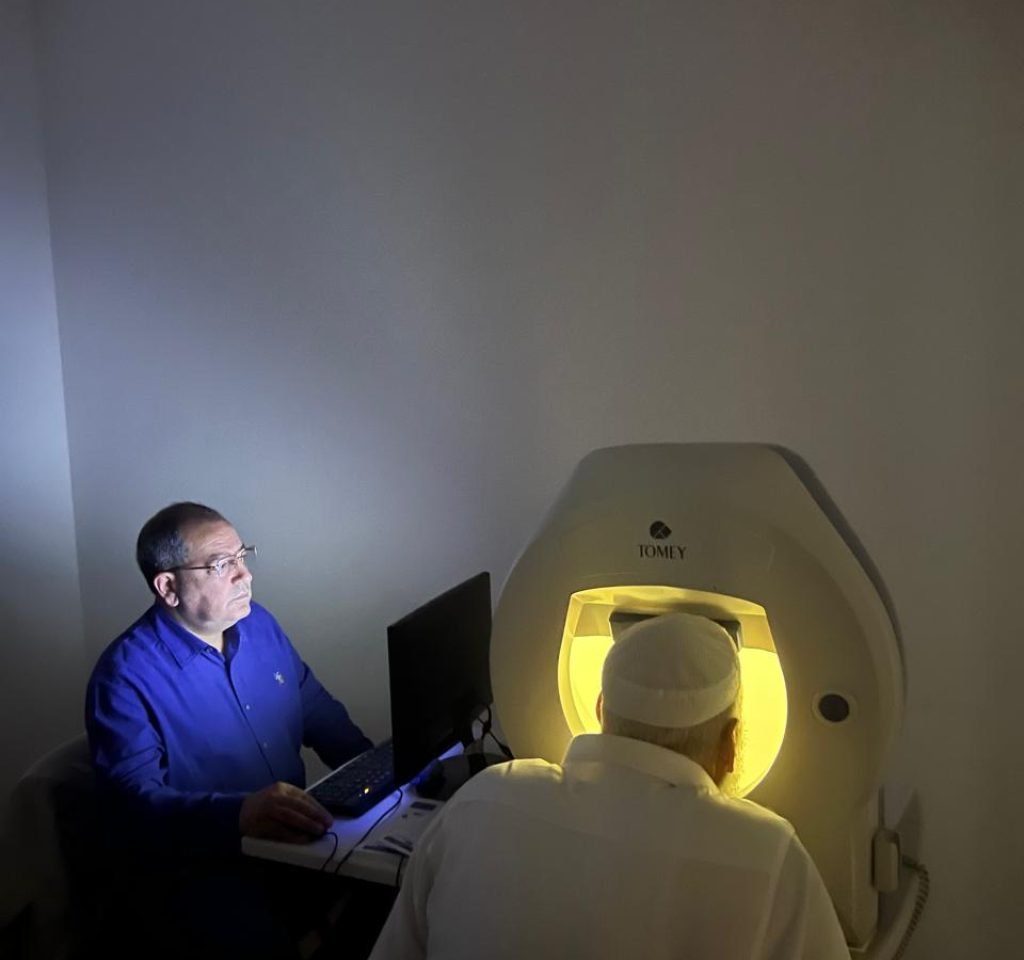
Non-invasive blue water surgeries: everything you need to know
Non-invasive blue water surgeries
Non-penetrating Glaucoma Surgery (Non-Penetrating Glaucoma Surgery) is an important development in the treatment of glaucoma, as it provides an effective solution to reduce intraocular pressure while reducing complications associated with conventional surgeries. This type of surgery is a suitable option for many patients with chronic glaucoma.
What is meant by non-invasive blue water surgery
It is a surgery in which Lowering intraocular pressure without completely penetrating the inner membrane of the eye (Without direct opening of the anterior chamber of the eye), which makes it safer compared to invasive surgeries such as trabeculectomy (Trabeculectomy).
The most famous of these surgeries:
Treatment with non-penetrating sclerectomy (Deep Sclerectomy)
Drainage channel under the sclera (Viscocanalostomy)
Advantages of non-invasive surgeries
Effectively reduce intraocular pressure
✅ Significantly reduced risk of infection or complications
✅ Rapid stabilization of the eye after surgery
✅ Does not require a long stay in the hospital
✅ Suitable for patients who do not respond well to drug therapy
How does Dr. Hazem Helmy perform these surgeries
With his long experience in Glaucoma Surgery, Dr. Hazem Helmy uses precision instruments and microscopic techniques to perform these operations with minimal intervention and excellent results.
The main steps include:
Thoroughly prepare the sclera layer (the white layer of the eye)
Opening new drainage channels or expanding natural channels
The use of substances that help keep the new ducts from clogging (such as gel or medical viscous liquid)
Suitable cases for non-invasive surgery
Patients suffering from Primary chronic open-angle glaucoma
Patients who cannot tolerate the complications of conventional surgery
Patients who are elderly or have other diseases that increase the risk of wound healing
Patients with severe sensitivity to glaucoma drops or drug therapeutic failure
What is the difference between this surgery and traditional surgery
🔹 Non-invasive surgery does not open the eye from the inside, which reduces the risk of infection, bleeding and other complications. But they may be less effective in some advanced cases, and the doctor determines the most suitable ones for each case.
Is this surgery suitable for all patients
🔹 Not for all cases, and Dr. Hazem Helmy evaluates each patient individually to determine whether non-invasive surgery is a suitable option for him.
Steps::
Implantation of small stents inside the natural channels of the eye.
Promote the discharge of pure liquid through these stents.
Results: reduction of intraocular pressure while reducing the need for the use of pharmacological drugs.
Frequently asked questions
The latest technologies used in the treatment of cataracts and glaucoma rely heavily on improving accuracy and reducing the risks associated with conventional surgeries. The following are the most prominent of these technologies:
- 1. Cataract treatment:
- Femto-laser (Femtosecond Laser): femtosecond laser technology is used to create a small hole in the cornea, and then the blurry lens is atomized using high-precision laser beams before being sucked and removed. This method is considered among the most accurate and safe compared to traditional methods.
- Phaco apparatus (Phacoemulsification): this technique is based on ultrasound to break up the cataract lens and remove it through a very small incision (about 2-3 millimeters), which helps to speed up the recovery process and reduce complications.
- Smart lensesAfter removal of the affected lens, advanced artificial lenses such as multifocal Lenses (Multifocal Lenses) or adaptive lenses (Accommodative Lenses) are implanted, which provide clear vision at various distances (close, medium, far).
- Treatment of glaucoma:
- Precision dual-pulse laser (Micropulse Diode Laser): This device is one of the latest means used in the treatment of glaucoma, as it improves the drainage of intraocular fluid without the need for major surgery, which helps to effectively reduce intraocular pressure .
- Technical Trabeculoplasty: This technique uses a laser to stimulate the drainage of intraocular fluid, which is a quick and effective way to relieve pressure on the optic nerve.
- Liquid drainage surgery (Trabeculectomy): In severe cases that do not respond to laser therapy or medications, surgery is performed to drain the intraocular fluid to permanently relieve pressure.
- Implanted liquid drainage devices (Glaucoma Drainage Devices): Small intraocular devices are implanted to improve fluid drainage and continuously lower pressure.
- Common techniques:
- Three-dimensional imaging (3D Imaging): Three-dimensional imaging is used to accurately assess and plan the condition of the eye before surgery, which helps the surgeon to choose the best type of artificial lens for each patient based on his individual condition .
- Surgical robots: Surgical robots are used in complex operations to provide unprecedented accuracy, reducing the risks associated with conventional surgery and enhancing overall results.
- Future directions:
- Clinical trials are underway to test new technologies such as the use of stem cells or gene therapy for the treatment of glaucoma and cataracts, which may provide more effective solutions in the future.
From the above, modern technologies such as Femto-laser, phaco, and MicroPulse diode laser are among the latest means used to treat cataracts and glaucoma. These techniques are aimed at improving the results of surgical operations, reducing risks and complications, leading to a faster recovery and better restoration of vision.
The latest studies on the use of stem cells in the treatment of eye diseases indicate the presence of promising prospects in the restoration of eyesight and the treatment of degenerative conditions that were considered incurable in the past. The following are the most notable recent results and trends:
- The use of stem cells for the treatment of degenerative diseases of the retina:
- Clinical trials using induced pluripotent stem cells (iPSCs) in the treatment of diseases such as age-related macular degeneration (AMD) and diabetic retinopathy have been declared successful .
- This technique is based on stimulating stem cells to produce new cells that can replace damaged cells in the retina, which leads to the restoration of visual function.
- Stem cell injections for tissue regeneration:
- Recent studies have shown that intraocular stem cell injections can help regenerate damaged tissues, especially in cases of loss of pigment epithelial cells or retinal neurons.
- This technique is aimed at preventing the progression of the disease and stimulating the natural healing process.
- Treatment of cataracts using stem cells:
- Scientists have removed cataract-infected lenses and used stem cells naturally present in the eye to stimulate the production of a healthy new lens.
- This method is considered a revolution in the field of cataract surgery, as it reduces the need for implantation of artificial lenses.
- 4. The use of stem cells for the treatment of glaucoma:
- There are experiments that suggest that stem cells may be effective in repairing damaged tissue in the optic nerve caused by glaucoma.
- These cells reduce intraocular pressure and improve fluid drainage, which contributes to the preservation of vision.
- Future research:
- The use of gene therapy techniques with stem cells is now being explored for the treatment of hereditary eye diseases such as nocturnal retinopathy and macular degeneration of the retina.
- These hybrid techniques aim to address the root cause of the disease rather than just managing the symptoms.
- Promising results from clinical trials:
- Clinical trials conducted in Turkey and other places showed that stem cell transplantation was safe and effective in the treatment of many degenerative diseases of the eye.
- No serious side effects have been reported so far, which makes this treatment promising for the future of Ophthalmology.


To communicate
Book now
Do you have vision problems or need an eye exam Book your appointment now with the best ophthalmologists! We provide you with high-quality medical services in a comfortable and safe environment
Working hours
- The gathering clinic: on Sundays and Tuesdays from 2 to 9 pm
- Giza clinic: Saturday, Monday and Wednesday from 5 to 11 pm


